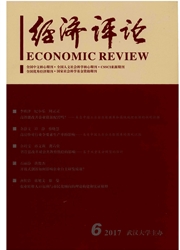

 中文摘要:
中文摘要:
为了更好地探讨我国十大规划产业的发展,本研究从资本、劳动和全要素生产率等方面构建数理模型和计量模型,利用产业数据进行实证检验,得出结论:出口绝对数量对产业发展具有正向作用,而出口比重起负作用,标准化回归系数显示正作用大于负作用;就业与投资均出现转向信号,某些产业和领域的就业边际增加和投资边际增加会伤害增长与效率;装备制造业、纺织产业和船舶产业的人力资本对产业发展起到了明显的促进作用,但其余产业的情况均不好;在自主研发和创新能力方面,汽车产业、钢铁产业、装备制造业、船舶产业和有色金属产业具备了较好的基础和能力,而另外四个产业能力不足;钢铁产业、电子信息产业和石化产业对国外研发溢出的吸收较好,另外六个产业则较差。本文的结论为扩内需、调结构、稳定出口等政策提供了产业层面的实证证据。
 英文摘要:
英文摘要:
In order to better explore the development of ten planning industries,this study builds mathematical and econometric models,based on K,L and FTP,and uses 1989-2007 industry-level data to make empirical tests,concluding that export amount plays a positive role on industrial growth,while the proportion of exports plays a negative role,standardized regression coefficients show greater positive effect than negative effect.Some industries show turning signals in employment and investment with marginal increases hurting industrial growth and efficiency.Human capital has played a significant role in the development of equipment manufacturing,textile and shipbuilding industries,but doesn’t in the rest of the industries;In terms of independent RD and innovation,the automobile,steel,equipment manufacturing,shipbuilding and non-ferrous metal industries have a good foundation and capacity,but the other four industries lack;Iron and steel,petrochemical and electronic information industries take better absorptions from foreign RD spillover,and the other six industries do poorly.The findings give industry-level empirical evidences for expanding domestic demand,readjusting the structure and stabilizing exports.
 同期刊论文项目
同期刊论文项目
 同项目期刊论文
同项目期刊论文
 期刊信息
期刊信息
